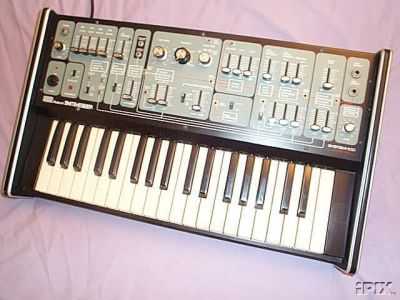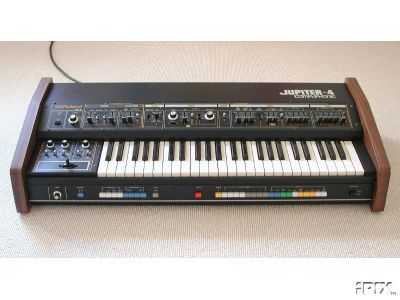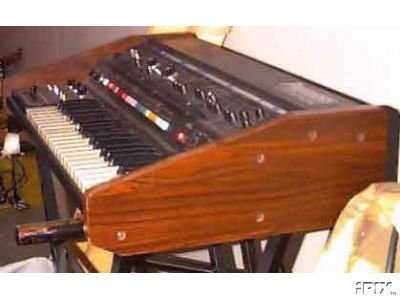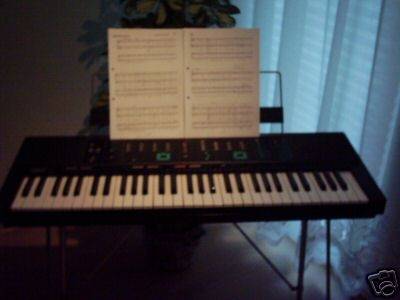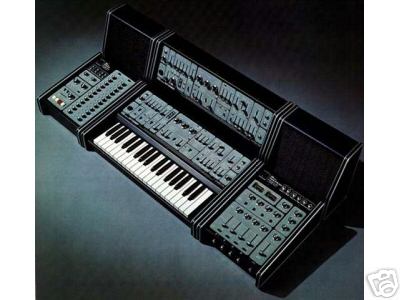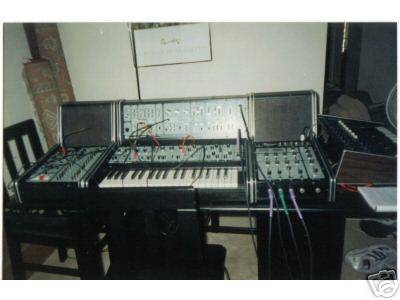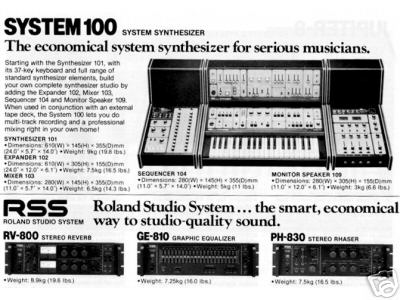Hardware
On this page I'm trying to collect some pictures of the Hardware used by Heaven 17.
I'm no musician myself, so please do not expect detailled infos here ;-)
|
Roland 100 model 101 |
|
Roland 100 model 102 |
Some text info from an ebay auction of a Roland Jupiter-4 : The thing that sets this synth apart from all others is the oscillators and filters. They have the richest, most harmonically dense sound you can imagine. They're so distinctive, that to this day I can always tell when it, or samples of it, are being used. The Prophet 5, which came out about a year or so later, had one more oscillator, but the sound paled in comparison to that of the JP-4. There's just no other synth like it. This synthesizer was used by all of the definitive groups of the time, and takes its own place in the history of electronic music, and especially electronically based pop and rock music. Groups like Roxy Music, Bryan Ferry, Human League, Devo (Bob Mothersbough's brother worked for Roland), Magazine, Soft Cell, John Foxx, Visage, Spandau Ballet, Gary Numan, The Fast, and many others owe their sound to the Roland Corporation, as much as anything else. It has 4 VCO's (plus a sub-oscillator), VCF, VCA, LFO, Envelope Generator, Noise Generator, Modifier/Trigger Generator, Trigger, Delay/Bend, Mode Selector, 10 presets, 8 memories, 4 Key Assignment Modes, an arpeggiator with 4 settings, Portamento, Transpose, LFO Modulation, Tuning, and an Ensemble setting. It has stereo and mono outs, a headphone jack, an external control jack (damper, vcf, clock). It weighs just over 40 pounds. This synthesizer has a past. While I used it almost exclusively in my own studio (which is why it's in such great condition), I also used it as a studio musician, at times. It was used on recordings and/or played live or in rehearsel with Nico (who used to play it herself, sometimes), Mick Ronson, members of Bon Jovi (Tico Torres), members of Material, Heaven 17, and a host of others. |
Roland Jupiter-4 |
The ProMars CompuPhonic is essentially a classic, monophonic version of the Jupiter 4. It has 10 preset sounds and 10 user programmable preset patches. The preset sounds include Bass, String, Clavi, Piano, Voice, Trombone, Sax, Trumpet, Synth I and Synth II. A very standard and well laid out set of knobs, sliders and edit controls give you the power to create some really cool sounds. There are two individual VCO oscillators that can be de-tuned, a nice VCF filter with its own ADSR, a typical VCA envelope section, a nice LFO and a pitch/mod wheel that can effect the LFO, VCF or VCA. It even has a noise generator. The Promars Compuphonic makes a unique alternative to other Roland SH-type synths since, although it has very SH-type controls and layout, its sound and preset capabilities are more like the famous Jupiter synths and at a fraction of the cost. Nice wood casing and Vintage appeal. Perhaps the most famous of these were Depeche Mode (who used one briefly on their 'See You' tour in 1982), Klaus Schulze and Peter Vetesse. More recently (in 1996) Martyn Ware used one with Heaven 17. Banco del Mutuo Soccorso 1979. Technical Info Polyphony Monophonic Oscillators 2 VCOs LFO 1 LFO (sine, square, ramp up and ramp down) VCF HP filter, LP rez filter with ADSR which can be inverted VCA ADSR envelope gen Memory 10 presets, 10 user patches, 8 performances, 1 user performance Keyboard 37 keys Control CV / Gate Date 1979 - 1982 |
ProMars CompuPhonic |
The Jupiter 8 was Roland's first truly professional analog synthesizer. The Jupiter 8 features 16 rich analog oscillators at 2 per voice, eight voice polyphony and easy programming! At eight voices you can get some pretty thick analog sounds. Easy and intuitive programming via front panel sliders, knobs and buttons for all your tweaking needs. The legacy of the Jupiter synthesizers is due to their unique voice architecture and design, creating sounds that were so unreal and amazing that they have to be heard! No other synths in the world can create analog sounds as cool and authentic as these.
The Jupiter 8 was the biggest and fattest of them all (Jupiters and Junos)!
It was one of the first synths to allow its keyboard to be split and layered
- it's eight voices of trance heaven! Cross-mod, oscillator sync, a great
LFO and a classic arpeggiator are also on-board. (The arpeggiator can be
heard all over the Duran Duran classic, "Rio".) There's also two killer resonant
analog 24dB/oct filters with 2-pole and 4-pole settings as well as low- and
high-pass filtering methods. Unfortunately for the earlier models, tuning
was very unstable but that seemed to be resolved in later models. Unlike
its smaller counterpart, the Jupiter 6, the Jup 8 does not feature MIDI,
only Roland's DCB sync can be found on some models. However, MIDI retro-kit's
are available from various companies. Patch presets can store keyboard splits,
arpeggiator settings, voice assign mode, hold, portamento and modulation
settings. |
Roland Jupiter 8 |
|
Yamaha PSR 80 |
Classic 70's Roland modular synthersizer. The System 100 is a great sounding analog system with the classic vintage Roland sound. I am selling a complete system,, with all modules, keyboard module (101) expander module (102), speakers (109), mixer (103), analog sequencer, Original manual (in good condition) And the fantastic 3 book "roland beginners guide to synthesis", written for the system 100 FAMOUS USERS (from www.vintagesynth.org): Vince Clarke, Aphex Twin, BBC Radiophonic Workshop, Electronic Dream Planet, Tangerine Dream, Groove Corporation, Depeche Mode, Heaven 17, Freddy Fresh, Joy Electric, Luke Vibert, Human League, Nitzer Ebb, Tears For Fears, Vangelis, Hans Zimmer, and Meat Beat Manifesto.
Here's more about this amazing classic modular synthesizer |
Roland System 100 |
|
Fairlight CMI monitor |
